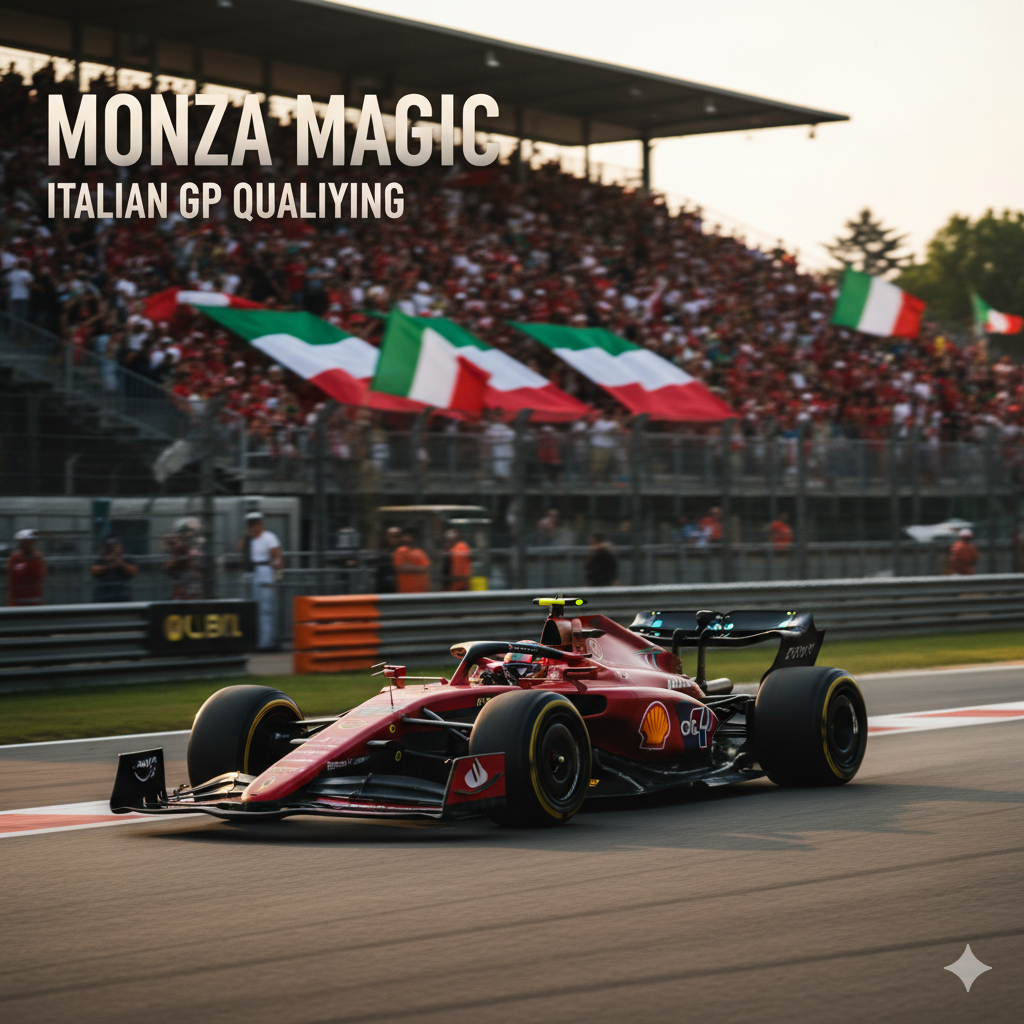Dive deep into the 2024 Italian GP qualifying. We break down strategies, standout performances, and what it means for the race at Monza.
The roar of engines, the blur of speed, and the sheer passion of the Tifosi – there’s nothing quite like the Italian Grand Prix at Monza. This legendary circuit, often called the “Temple of Speed,” always delivers drama, and the Italian GP qualifying session is frequently a spectacle in itself. It’s where dreams are forged and hopes are shattered, all in the pursuit of that coveted pole position. But what truly goes into mastering Monza over a single qualifying lap? Let’s peel back the layers and understand the intricate dance between driver, machine, and track.
The Unique Challenge of Monza Qualifying
Monza is an outlier on the Formula 1 calendar. Its long straights demand incredibly low downforce setups, meaning cars are trimmed out to minimize drag and maximize top speed. This creates a delicate balance: while straight-line speed is paramount, maintaining grip through the few high-speed corners and chicanes is crucial.
Low Downforce, High Stakes
Teams spend countless hours simulating and testing different wing configurations to find the sweet spot. Too much downforce, and you’ll be swallowed alive on the straights. Too little, and the car becomes a handful in places like the Curva Grande and the Ascari chicane, leading to time-sapping slides or, worse, an off.
A key factor in the Italian GP qualifying is the slipstream. Drivers often work together, or strategically position themselves, to gain a tow from a car ahead, boosting their speed by several kilometers per hour down the long straights. This can be a game-changer, but it also adds an element of risk and often leads to frantic traffic jams in Q1 and Q2 as drivers jostle for position.
Italian GP Qualifying: A Lap in Detail
Imagine hurtling down the main straight, the speedometer nudging 340 km/h.
- Turn 1 (Variante del Rettifilo): A brutal braking zone from top speed into a tight chicane. Precision is key to avoid lock-ups and missing the apex.
- Curva Grande: A long, sweeping right-hander taken at incredibly high speed. It’s all about carrying momentum and trusting the car.
- Variante della Roggia: Another tight chicane requiring heavy braking and a quick change of direction.
- Leshmos 1 & 2: Two medium-speed corners where stability and traction are vital.
- Variante Ascari: A challenging series of left-right-left corners that demands commitment and a perfect line to maximize exit speed onto the back straight.
- Parabolica (Curva Alboreto): The iconic final corner. A long, banking right-hander that tests a driver’s nerve and the car’s grip, leading onto the main straight. A good exit here is critical for a strong lap time.
It’s a relentless assault on the senses, requiring pinpoint accuracy, immense bravery, and a perfect understanding of the car’s limits.
Key Moments and Standout Performances
The 2024 Italian GP qualifying delivered its usual dose of drama. While specific outcomes vary year to year, we often see certain trends emerge.
- The Rise of the Underdog: Monza has a history of throwing up surprises. Sometimes, a team that struggles on high-downforce tracks can find an unexpected burst of pace here due to their car’s inherent straight-line speed capabilities.
- Veteran vs. Rookie: The experience of knowing where to push and how to manage the slipstream can be invaluable. However, the raw aggression and fearlessness of a rookie can also sometimes pay dividends.
- Tyre Management: Even in qualifying, tyres play a role. Getting the soft tyres into their optimal operating window for just one flying lap is an art form. Over-pushing on the out-lap or making a mistake can mean the tyres aren’t at their peak when it matters most.
One memorable moment from a past Italian GP qualifying saw a driver, against all odds, snatch pole by just a few hundredths of a second, demonstrating the razor-thin margins at the top level of F1. This highlights how every millisecond counts, and how a slight adjustment in braking point or throttle application can make all the difference.
Strategic Battles and Team Dynamics
Qualifying isn’t just about individual pace; it’s a strategic chess match.
The Slipstream Lottery
As mentioned, the slipstream is a huge factor. Teams often strategize to give one of their drivers a tow, sometimes at the expense of the other. This can lead to fascinating intra-team battles and sometimes, unintended consequences if the timing isn’t perfect. We’ve seen instances where drivers queue up, resulting in many missing their final flying lap.
The Impact on Race Day
Pole position at Monza isn’t as critical as it might be on tighter, twistier circuits. The long run down to Turn 1 means a strong start and effective slipstream management can see drivers from further back make up positions quickly. However, starting at the front still offers a significant advantage:
- Clean Air: The pole sitter has clear air ahead, allowing them to dictate the pace and avoid being caught in midfield skirmishes.
- Strategic Flexibility: Being at the front often gives teams more strategic options, especially concerning pit stops.
- Psychological Edge: Starting from pole provides a massive psychological boost for both the driver and the team.
Did you know that out of the 73 Italian Grand Prix races held at Monza, 40 have been won from pole position? (Source: Formula 1 Official Website) While not an absolute guarantee, it certainly improves the odds!
Looking Ahead: What’s Next for the Italian GP
The Italian GP qualifying sets the stage for what promises to be an exhilarating race. The performance gaps between teams at Monza are often smaller than elsewhere, thanks to the low-downforce equalizer. This means we can expect close racing, daring overtakes, and potentially some unexpected results.
Keep an eye on:
- Tyre degradation: Even with soft tyres, managing them over a full race distance will be key.
- Safety Cars: Monza’s high-speed nature and close racing can often lead to incidents and safety car periods, which can completely shake up race strategy.
- Pit stop strategy: When to stop, and for what tyres, will be crucial decisions for the strategists on the pit wall.
Conclusion: The Thrill of the Temple of Speed
The Italian GP qualifying is a masterclass in raw speed, precision driving, and strategic thinking. It’s a reminder of why we love Formula 1 – the constant pursuit of perfection, the incredible engineering, and the sheer audacity of the drivers who push these machines to their limits. Monza always delivers, and qualifying is just the beginning of the story.
What were your favourite moments from this year’s qualifying session? Share your thoughts in the comments below!
Related Reads:
Further Reading:
Share this content:
